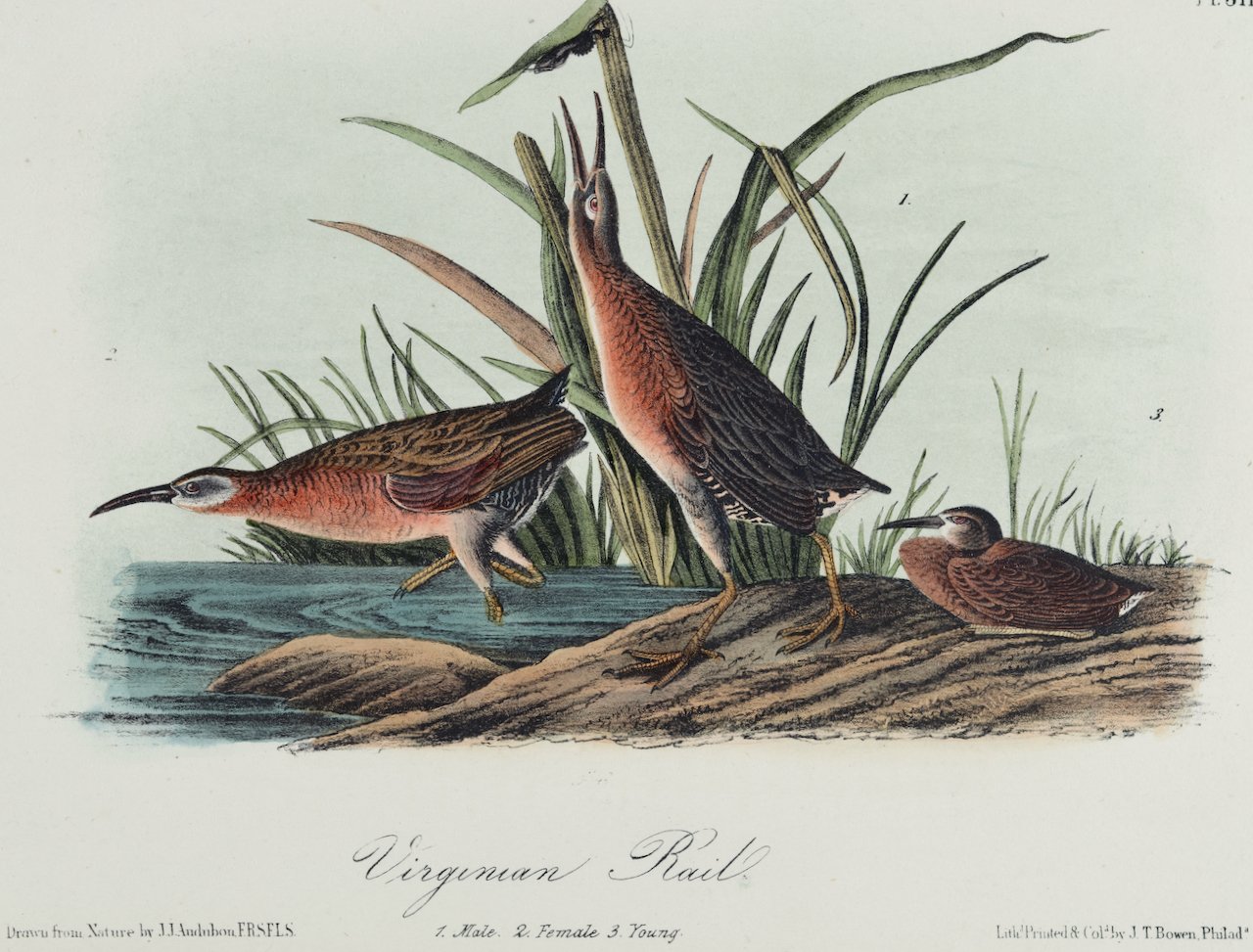Golden Eye Duck: an Original 1st Edition Hand Colored Audubon Bird Lithograph
An original rare and extremely collectible first edition John James Audubon hand colored royal octavo lithograph entitled "Golden Eye Duck", No. 82, Plate 406, from Audubon's "Birds of America". It was lithographed, printed and colored by J. T. Bowen and published in Philadelphia between 1840-1844. It depicts male and female Golden Eye ducks in flight.
Creator: John James Audubon (1785-1851, American, French)
Creation Year: 1840
Dimensions: Height: 6.25 in (15.88 cm)
Width: 10 in (25.4 cm)
Medium: Lithograph
Condition: See description below.
Reference #: 4485
An original rare and extremely collectible first edition John James Audubon hand colored royal octavo lithograph entitled "Golden Eye Duck", No. 82, Plate 406, from Audubon's "Birds of America". It was lithographed, printed and colored by J. T. Bowen and published in Philadelphia between 1840-1844. It depicts male and female Golden Eye ducks in flight.
Creator: John James Audubon (1785-1851, American, French)
Creation Year: 1840
Dimensions: Height: 6.25 in (15.88 cm)
Width: 10 in (25.4 cm)
Medium: Lithograph
Condition: See description below.
Reference #: 4485
An original rare and extremely collectible first edition John James Audubon hand colored royal octavo lithograph entitled "Golden Eye Duck", No. 82, Plate 406, from Audubon's "Birds of America". It was lithographed, printed and colored by J. T. Bowen and published in Philadelphia between 1840-1844. It depicts male and female Golden Eye ducks in flight.
Creator: John James Audubon (1785-1851, American, French)
Creation Year: 1840
Dimensions: Height: 6.25 in (15.88 cm)
Width: 10 in (25.4 cm)
Medium: Lithograph
Condition: See description below.
Reference #: 4485
This original rare first edition hand colored Audubon bird lithograph is in excellent condition. The sheet measures 6.25" x 10". The original text pages, pages 362-366, from Audubon's publication are included.
John James Audubon (1785-1851) was a naturalist and artist. He was initially unsuccessful financially prior to the publication of his famous work “The Birds of America”, spending time in debtor’s prison, once stabbing a disgruntled investor in self-defense. However, his obsession with birds and art motivated him to persist in his goal of documenting every bird in America via his watercolor paintings and publishing his works for all to enjoy. Audubon's first illustrations were published in a large elephant folio size. Due to their expense they were purchased in rather small numbers by the wealthy. To reach a larger audience, Audubon, with the help of his sons and J. T. Bowen, published a smaller octavo sized lithograph version, which were much more affordable.
With the success of his bird projects, Audubon then turned his attention to four-legged animals. He explored the Missouri River in 1843 sketching the four-legged animals he encountered in their natural setting. His expedition covered some of the same regions recently explored by Lewis and Clark, traveling from present day Alaska to Mexico. Audubon realized that this was an opportunity to document these animals in the still relatively pristine American wilderness, before man encroached on their environment.
Between 1845 and 1848, Audubon and his sons John Woodhouse Audubon and Victor Gifford Audubon produced a set of elephant folio sized lithographs that were primarily engraved and hand colored by J. T. Bowen in Philadelphia. The publication, which included text descriptions of the animals was published 3 years before Audubon died. As with the birds, this was followed by a three-volume set of 155 octavo-sized plates entitled “The Quadrupeds of North America” completed and published by Audubon’s sons, John, Jr. and Victor.
Audubon prints continue to be popular and a wise investment. The double elephant folio set “The Birds of America” have sold at auction for as much as $8.8 million, and individual plates may sell for six figures. The beautiful octavo sized plates are not as expensive, but becoming more sought after, as the folio bird plates become unattainable to all but the very wealthy.


































